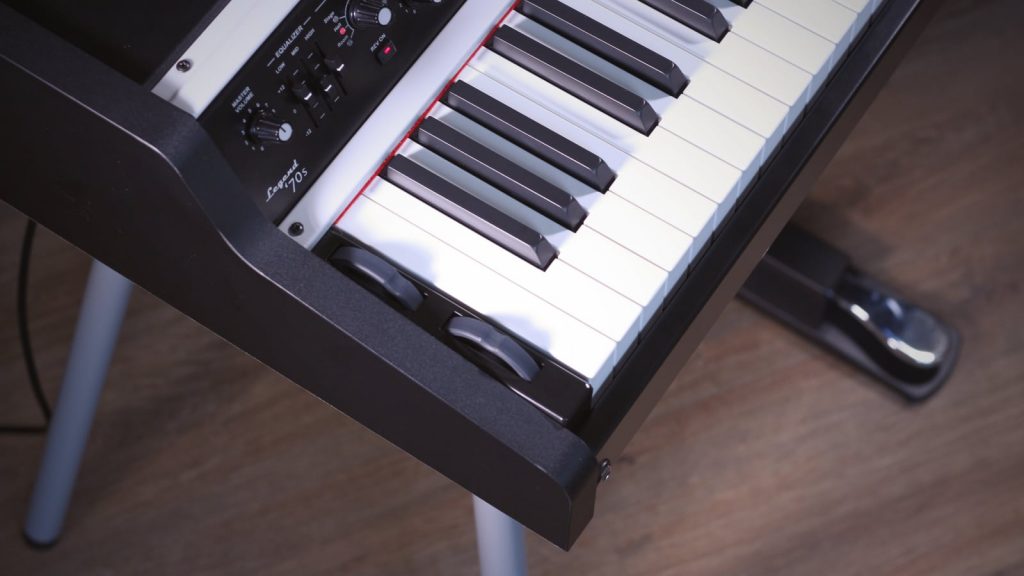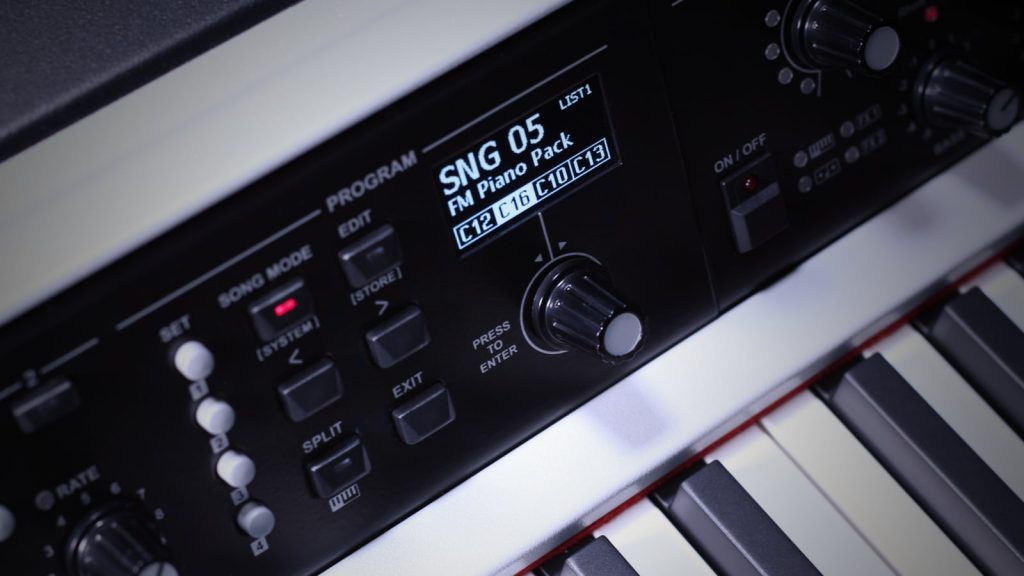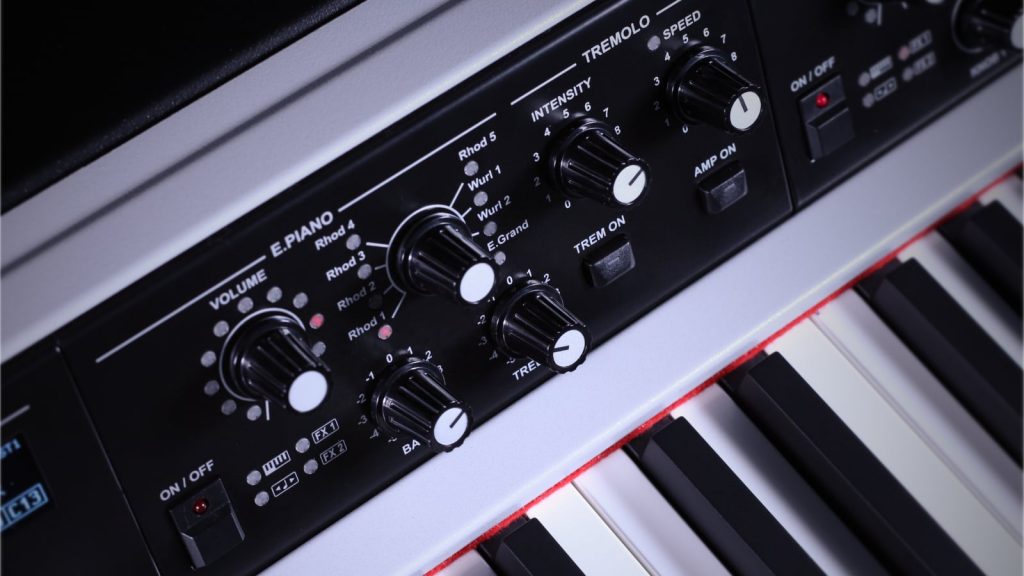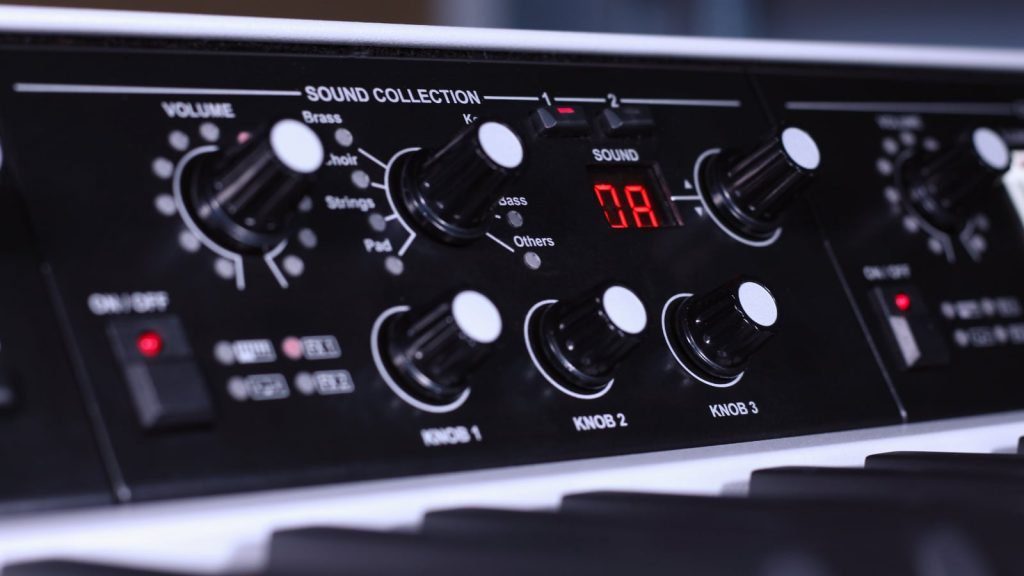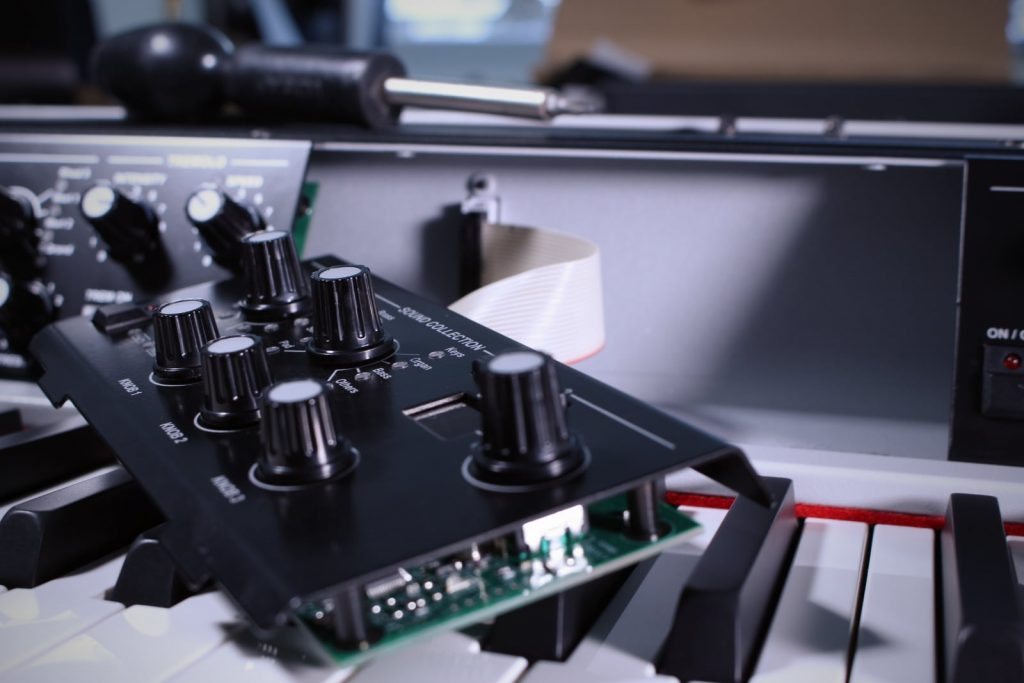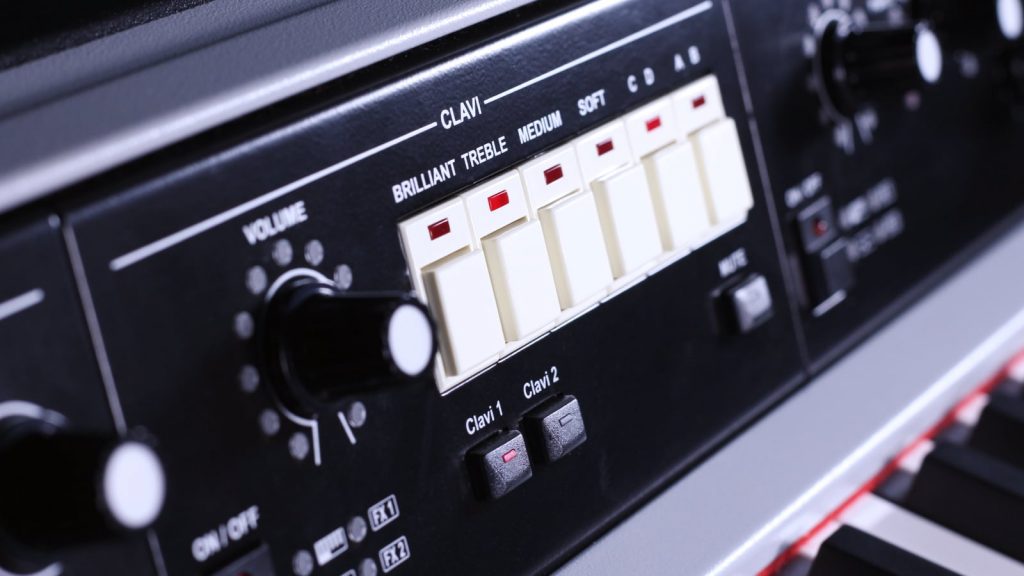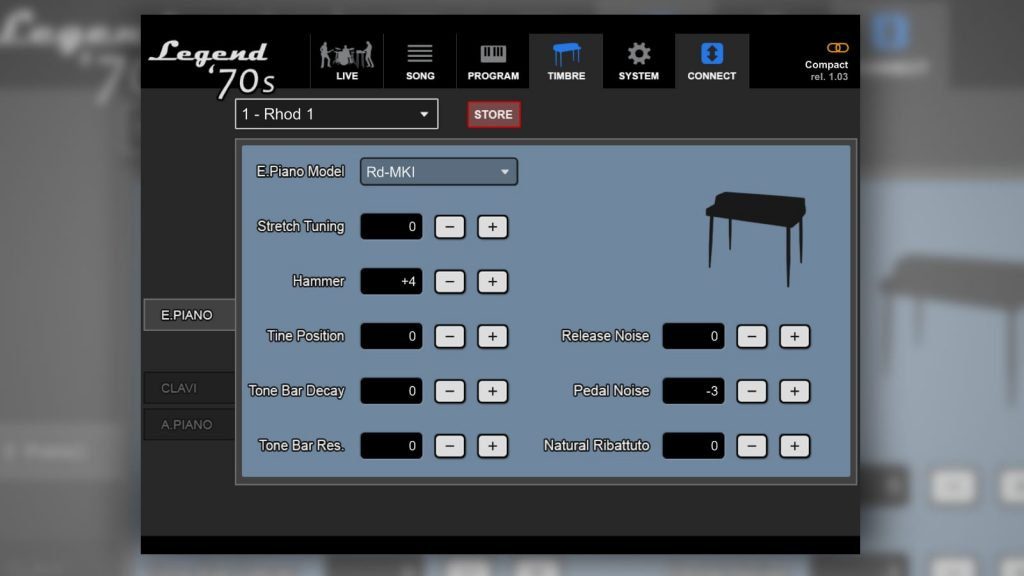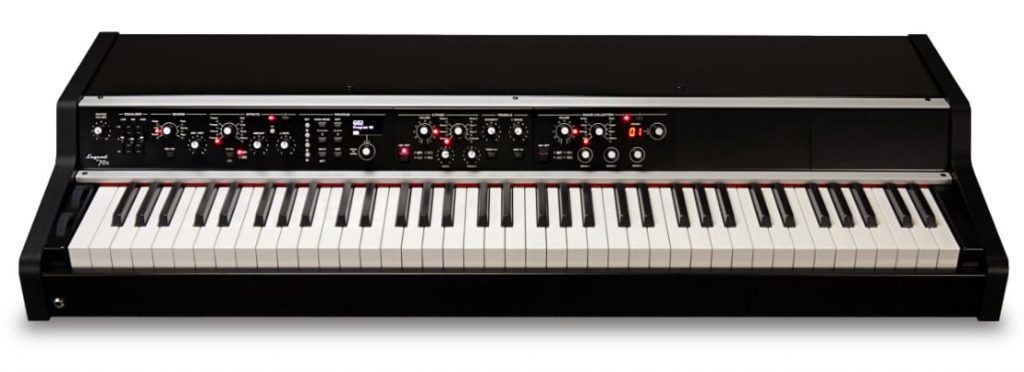Viscount Legend ’70s in Practice
Although it takes a little getting used to, the instrument is basically self-explanatory. That’s the advantage of a control concept that provides a separate knob or button for (almost) every function. Of course, this is in keeping with the retro-vintage style, but more importantly, it is convenient and just right for anyone who likes to tweak the sounds. You need this kind of control concept for an authentic vintage electric piano experience.
Fender Rhodes sounds live from the fact that you can quickly increase the rate of a phaser or chorus, or increase the delay time to emphasize a chord or riff. This works really well with the Viscount Legend ’70s, which is of course due to the great electric pianos themselves. It may seem minor, but I find it annoying that turning an effect on or off always interrupts the sound for a moment.
Another positive feature of the Legend ’70s is its polyphony. The sounds of the physical modeling modules (E.PIANO & CLAVI) are fully polyphonic, all sampling sounds have 128-voice polyphony. In its basic configuration, the Viscount Legend ’70s is equipped with the Main Panel and the two E.PIANO and SOUND COLLECTION modules. The latter also contains other piano sounds, so this is a good place to start. If you want even better piano sounds, you can add the PIANO module or the EXTERNAL MODULE (which was unavailable for testing).
The Legend ’70s connects to mobile devices via USB, transmitting USB MIDI and USB audio in parallel. The latter works in one direction only: Audio from apps is loaded into the Legend ’70s audio system and can also be adjusted in volume via the system menu.


